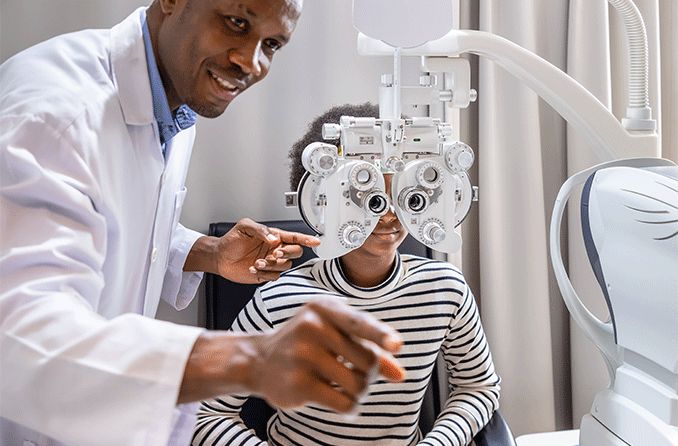Day: October 13, 2022

What is an Optical Business?What is an Optical Business?
You may be asking yourself, “What is an Optical Business?” or “What are the requirements for starting a successful optical shop?”. There are several things you should know, starting from the requirements to what to consider before you start your business. Optical shops offer a variety of services, so consider these things before you open your doors. After all, you want to make sure your optical store can serve your customers well.
Optical stores need strong communication and leadership skills. A dissatisfied customer will reflect negatively on your business and tarnish your brand. To avoid such problems, develop long-term goals and marketing strategies. Many optical store owners began by opening multiple locations. Optical shops make up half of all business revenues, and the right marketing strategy can increase your chances of success. The following tips will help you establish a successful optical business:
Optical practices must work with vendors who offer a variety of frame styles and reasonable exchange policies. You must be prepared to switch frame styles and lines, which often require you to spend additional money. If you make a mistake, your customers will know, and they won’t come back. In addition to choosing the right suppliers, you should be able to keep your customers happy. Once you have satisfied customers, you’re ready to expand your practice.
A key factor in optical success is OD involvement. Despite being busy managing the practice, ODs must be active participants in the process of selling optical goods. In fact, a common mistake is to leave optical frame purchases to the staff, which is a major financial mistake. By being active in optical sales, an OD can ensure a profitable practice. And, by educating staff in the field of sales and marketing, he or she can improve the overall profitability of the practice.
Services Offered by an Optical Shop
An optical shop should provide services based on customer satisfaction levels. Customer service goes far beyond greeting customers and offering same day service for eyeglasses and contact lenses. The goal of an optical shop should be to meet and exceed customers’ expectations while increasing sales and profitability. For example, an optical shop should offer lenses that can be used for computer and distance work, and same-day service for eyeglasses. A knowledgeable staff should be able to give realistic sales recommendations and respond to customer concerns to create a pleasant atmosphere for both customers and employees.
Things to Consider for Starting an Optical Business
Marketing is an important part of running an optical business. Marketing can take many forms, and a comprehensive marketing plan is essential for a successful business. Marketing strategies should cover many important areas, including choosing a business name, identifying a clear brand, using social media, creating a website, generating new leads, search engine optimization, managing reputation, and designing business cards. Here are some important marketing strategies for your optical business.
Location is important. Your business should be situated in a location where common people use optics. If it is located far away from a retail location, the customer won’t be able to find you quickly. In addition, the store should be easily accessible. Customers will often visit your store if you are located near a shopping center or other popular areas. Optical businesses should be visible and easily accessible to ensure the highest possible profits.
Consumers demand better quality. With the advent of the internet, the number of consumers purchasing optical products has increased significantly. Better quality is the foundation of a successful business. Without it, your optical business won’t last very long. Here are some tips to help you create an eyewear website:
Requirements for Starting an Optical Business
Before opening your own optical shop, you must know the requirements for starting an operation. These include a business plan, which will act as a roadmap to revenue. It should clearly define the type of business you plan to run and the financial and overhead required. This plan will also help you set goals and key performance indicators. Once you have these in place, you can start building your optical shop’s reputation and earning potential.
To be profitable, you should make sure you are able to maintain a high capture rate. Your optical business should generate at least five to six prescriptions per day. Profit margins for this industry range from 12% to 18%. You must also be able to support your operational costs with your patient base. Some multi-group practices have a larger optical operation. These businesses usually employ a large number of employees, which means that you need a high volume of patients to maintain a profitable optical business.
Another important requirement for starting an optical business is purchasing equipment. The initial investment in optical equipment will depend on the location and number of employees you plan to hire. For example, you should purchase 500 to 850 frames, a mixture of designer, affordable, and mid-range frames. Compare quotes from different vendors and decide which ones are the most affordable. If possible, you should also negotiate bulk discounts with suppliers. This is critical if you want to increase your profit margins. It helps to know how to haggle and what standard prices are for glasses.
Cost for Starting an Optical Business
If you’re considering starting your own optical business, you should first determine the cost for starting the optical business. There are many factors that affect the cost, including the location, equipment, and marketing. The initial investment may be as low as $2,500, but you may have to invest in additional equipment if you plan to expand. Depending on the goals of your business, you can consider partnering with a local lab or purchasing used equipment. Your first phase of business may also include promoting your store. You can purchase advertising in local magazines or hand out flyers.
Once you’ve determined the location and size of your business, you’ll need to determine the cost for hiring employees and purchasing equipment to dispense eyeglasses. You’ll also need to estimate the cost of licensing your business in the U.S., and legal expenses. A qualified accounting service is essential for calculating your costs. Finally, you’ll need to determine what kind of products you’ll sell. Fashion sunglasses and inexpensive frames will have lower startup costs, while prescription glasses will require more cash.
To get started, you should consider setting up a physical store at a prominent location. The main objective is to increase business, so choose a location where the general public frequents. Optical stores typically require 40-80 square meters. The location of the store is important, as customers often visit the store that matches their preferences. In addition, a store’s name and reputation will influence how much it costs to maintain it.
Average Annual Income of an Optical Business
The average annual income of an optical business is the amount of revenue a practice makes each year after all expenses and taxes are deducted. As an optical professional, you will be expected to make a profit, but the amount of profit will vary based on a number of factors. Optical practices should have a diverse inventory of frames, lenses, and accessories, and should also have reasonable prices. While it is not possible to give an exact figure of how much a practice will earn, an industrywide average will give you a rough idea of how to plan your finances.
Famous Optical Business in Seattle
One famous optical business in Seattle boasts “best selection of eyewear”. In 2012, it ranked #4 on KING 5 Evening Magazine’s “Best of Washington” list for optical shops. This shop is dedicated to providing the best possible service and care for its customers. For more information about the store, visit its website. In addition, it offers contact lens fittings, eye exams, and more. Located in downtown Seattle, this store is easily accessible and has a friendly atmosphere.
